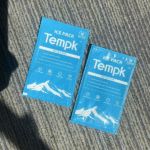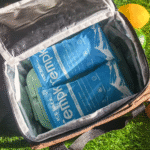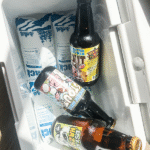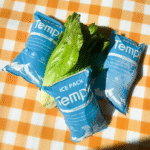When shipping temperature-sensitive products in 2025, using dry ice packs is an essential method to ensure your goods remain within their required temperature range. Dry ice allows for effective temperature control during transit, preventing spoilage and maintaining the quality of perishable items. This article provides comprehensive insights into using dry ice in cold chain logistics, y compris les meilleures pratiques, règlements, and the latest trends.
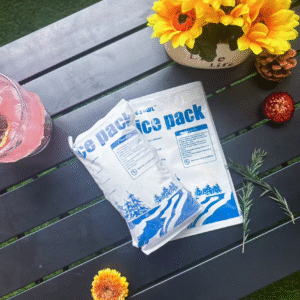
-
What is dry ice, and how does it work for shipping?
-
How to properly use dry ice packs for shipping?
-
What are the best practices for maintaining the right temperature during transit?
Qu'est-ce que la glace sèche, and How Does it Work for Shipping?
La glace sèche est un dioxyde de carbone congelé (Co₂) and is widely used in the shipping of temperature-sensitive goods. Contrairement à la glace ordinaire, which melts and leaves moisture behind, La glace sèche sublime directement dans le gaz, ne laissant aucun résidu liquide. This makes dry ice an ideal cooling agent for maintaining freezing temperatures during transit.
Why Dry Ice is Essential for Cold Chain Shipping:
-
Durée de refroidissement prolongée: La glace sèche dure plus longtemps que la glace traditionnelle, providing up to 48 hours of cooling, depending on the shipment size and packaging conditions.
-
No Moisture: As dry ice turns into gas, it prevents the water damage that could otherwise affect perishable items.
-
Rentable: Dry ice is a more affordable option compared to refrigerated containers, especially for shorter shipping distances or smaller shipments.
Comment utiliser correctement Packs de glace sec pour l'expédition?
1. Calculate Dry Ice Requirements
The amount of dry ice needed depends on factors such as the weight of the shipment and the duration of transit. Une règle générale consiste à utiliser 5 à 10 pounds of dry ice per 24 heures of shipping time for items weighing up to 12.5 livres.
Key Tips:
-
Pour short-distance shipments, use a lower amount of dry ice (Par exemple, 5 lbs par 24 heures).
-
Pour longer shipments, ensure that the cooling is sufficient by increasing dry ice quantity and using better insulation.
2. Use Proper Packaging
Dry ice must be placed inside well-insulated containers that minimize heat transfer. Les matériaux communs comprennent:
-
Mousse de polystyrène et Sacs Mylar, which offer excellent insulation.
-
Cooler bags that are designed to handle the sublimation of dry ice without compromising the integrity of the shipment.
Meilleure pratique: Ensure that the dry ice is positioned at the top of the shipment to allow the cold air to descend through the package, maintaining an even temperature distribution.
What Are the Best Practices for Maintaining the Right Temperature During Transit?
1. Surveillance de la température
For highly sensitive shipments, it is essential to track the internal temperature throughout the transit. Using temperature monitoring devices will help ensure that the goods remain within the desired range.
-
Real-Time Temperature Tracking: Consider including a enregistreur de données that tracks temperature changes in real-time and provides alerts if there are any deviations.
2. Label Packages Correctly
All shipments containing dry ice should be clearly labeled with the proper identification:
-
“Carbon Dioxide Solid” label for clear identification.
-
Et 1845 label to comply with shipping regulations.
-
Le poids net of the dry ice in kilograms must be included.
This ensures that handlers are aware of the contents and can take the proper safety precautions.
How to Optimize Your Shipping Processes with Dry Ice?
To further improve your cold chain logistics, here are some advanced strategies for optimizing dry ice usage:
-
Analyze Historical Shipping Data
Review past shipping data to determine the amount of dry ice used in different conditions. This helps improve future efficiency and reduce wastage. -
Use Temperature-Controlled Containers
For longer shipping durations, opter pour thermal reflective containers that can prolong the effectiveness of dry ice, ensuring the cold chain is maintained. -
Automate Shipping and Monitoring
Leverage AI-powered logistics platforms to predict shipping conditions and calculate the optimal dry ice amount required for each shipment. Automation can streamline the process, minimize human error, and ensure that your goods stay at the right temperature.
| Shipping Factor | Recommended Practice | Pourquoi ça compte |
|---|---|---|
| Quantity of Dry Ice | Use 5–10 lbs per 24 heures d'expédition | Ensures consistent cooling without wastage |
| Conditionnement | Use insulated containers like Styrofoam | Retains cold and extends dry ice longevity |
| Surveillance de la température | Include devices to track temperature | Prevents temperature excursions and spoilage |
Expédition de glace sèche: Tips for Safe and Efficient Use
Manipulation sûre de la glace carbonique
La glace carbonique est sans danger lorsqu'elle est manipulée avec soin. Utilisez toujours gants isolés and avoid direct skin contact to prevent frostbite. En plus, ensure dry ice is stored in well-ventilated spaces to allow the gas to dissipate safely.
Planning for Safe Disposal
As dry ice sublimates into gas, it must be handled correctly to avoid the build-up of carbon dioxide. Always ensure dry ice is disposed of in a zone bien ventilée, far from enclosed spaces.
2025 Tendances en matière de solutions d’expédition de glace carbonique
The cold chain industry is evolving rapidly with a focus on durabilité et technologie.
New Dry Ice Technologies:
-
Emballage plus intelligent: Progresser emballage intelligent are enabling shipments to self-regulate temperature, ensuring consistent conditions throughout transit.
-
AI-Driven Logistics: Artificial intelligence is used to predict environmental factors, optimize dry ice usage, and reduce waste.
Pratiques durables:
Eco-friendly packaging materials, tel que biodegradable liners et reusable containers, are becoming increasingly popular, Réduire l'impact environnemental.
Questions fréquemment posées
What is the ideal amount of dry ice for shipping seafood?
To maintain the freshness of seafood, use 1–2 pounds of dry ice per 24–48 hours of shipping time. Adjust based on transit conditions.
Can dry ice be used for shipping personal care products?
Oui, dry ice can be used for shipping personal care items, particularly those that need to remain cool but not frozen. Use proper insulation and avoid direct contact with the products.
Résumé et recommandations
Dry ice remains an essential tool for cold chain logistics, providing reliable cooling without moisture damage. En suivant les meilleures pratiques, such as proper packaging, surveillance de la température, et étiquetage, businesses can ensure the safe and efficient transportation of temperature-sensitive goods.
Actionable Suggestions:
-
Assess your shipping needs and determine which products require dry ice.
-
Train staff on safe handling procedures and regulatory compliance.
-
Envisagez d'intégrer emballage intelligent technologies to improve efficiency and reduce costs.
À propos du tempk
Et tempk, Nous nous spécialisons dans advanced cold chain solutions for shipping temperature-sensitive goods. Nos produits innovants, including dry ice packs, Matériaux à changement de phase, and insulated containers, ensure that your shipments arrive safely, on time, et dans un état optimal.
Appel à l'action: Reach out today for tailored cold chain solutions, and optimize your shipping processes with our reliable dry ice packs and cutting-edge logistics technologies.


















